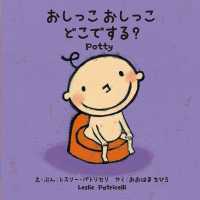- ホーム
- > 洋書
- > ドイツ書
- > Humanities, Arts & Music
- > Religion & Theology
- > judaism
Full Description
This book provides a rigorous social historical study of Eastern and East Central European Jewry with a specific focus on women. It demonstrates that only through the experiences of women can one fully understand key phenomena such as the momentous changes occurring in Jewish education, conversion waves, postwar relief efforts, anti-Jewish violence, Soviet productivization projects, and, more broadly, the acculturation that animated Jewish modernization. Rather than present a scenario in which secularism simply displaces traditionalism, the chapters in this book suggest a mutually transformative secularist-traditionalist encounter within which Jewish women were both prominent and instrumental.
Chapter "'To Write? What's This Torture For?' Bronia Baum's Manuscripts as Testimony to the Formation of a Write, Activist, and Journalist" is available open access under a Creative Commons Attribution 4.0 International license via link.springer.com.
Contents
Introduction: Jewish Women in Modern Eastern and East Central Europe.- Marginality without Benefits: Converting Jewish Women in Lithuanian Guberniyas.- From Anna Kluger to Sarah Schenirer: Women's Education in Kraków and Its Discontents.- 'To Write? What's This Torture For?' Bronia Baum's Manuscripts as Testimony to the Formation of a Writer, Activist, and Journalist.- Humanitarian Encounters: Charity and Gender in Post-World War I Jewish Budapest.- Crossing the Line: Violence against Jewish Women and the New Model of Antisemitism in Poland in the 1930s.- Gender Violence: The 1917-1922 Ukrainian Pogroms and the Challenges of Modernity.- The Toiling Froy and the Speculating Yidene: Discourses of Female Productivization in the Soviet Shtetl.- 'To Speak for Those Who Cannot': Masha Rol'nikaite on the Holocaust and Sexual Violence in German-Occupied Soviet Territories.








